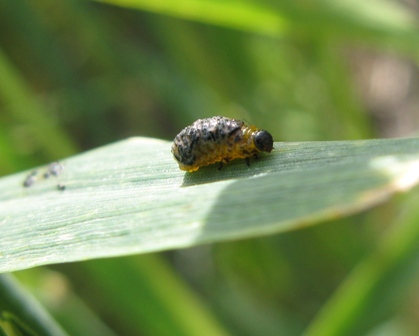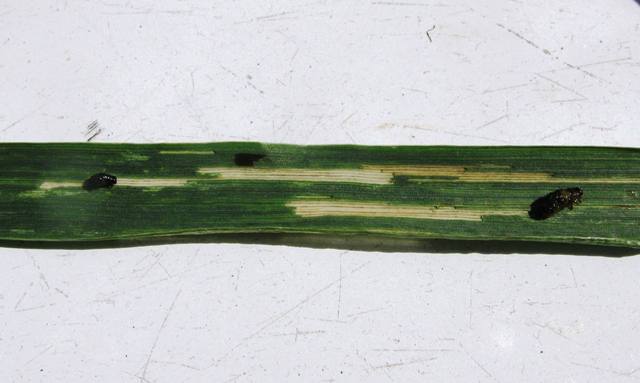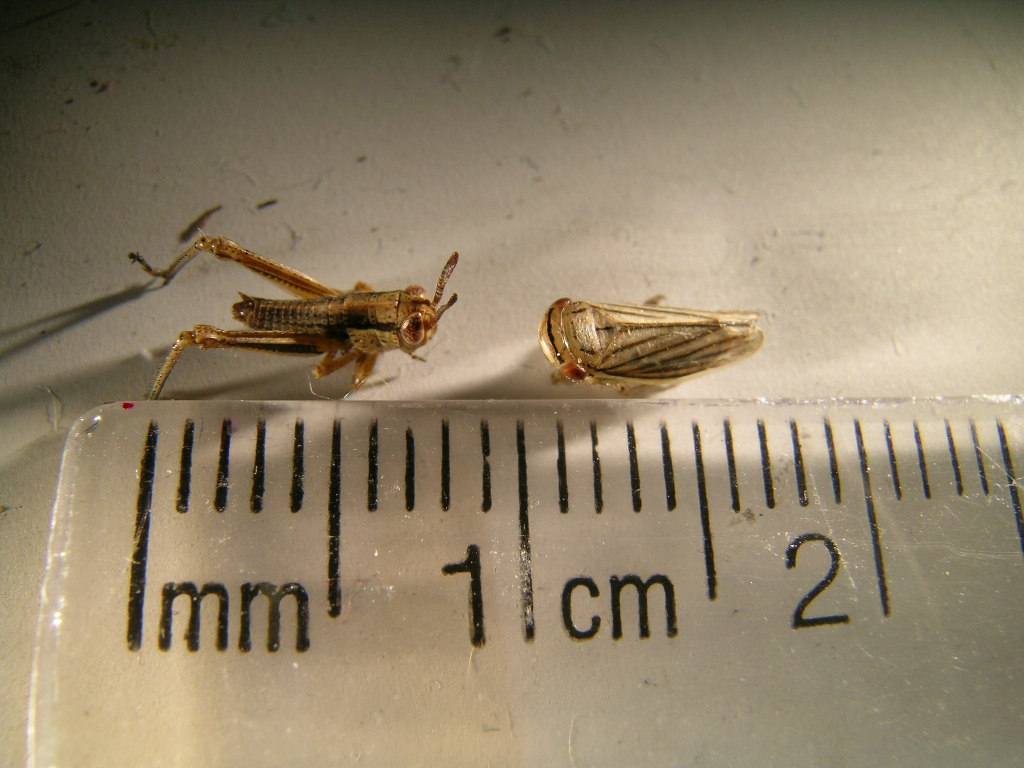Manitoba Insect & Disease Update: June 23, 2015
Cereal Crops Pathology report submitted by Pam deRocquigny, Cereal Crops Specialist, MAFRD
Stripe Rust and Leaf Rust: After the first reports of stripe rust and leaf rust in winter wheat last week, there have been additional reports of stripe rust and leaf rust in spring wheat fields near Altona, MB and along the US/Canada border. For wheat fields approaching the flowering stage, this is the key timing for a fungicide application to manage Fusarium head blight. A fungicide at this timing will also help protect the flag leaf from leaf diseases such as stripe rust or leaf rust. However, an earlier fungicide application targeting the flag leaf timing may be needed if leaf or stripe rust infections become visible on the flag leaf prior to heading.

Figure 1. Stripe Rust.
Physiological Leaf Spot: There have been suspected cases of physiological leaf spots (PLS) in winter wheat in the province. This is not an uncommon issue in winter wheat, especially when we’ve had growing conditions which favour its development including cool, wet spring and summer conditions that promote vigorous plant growth. Physiological leaf spot symptoms start as small yellow necrotic spots (one to three mm) on the upper leaves. As they develop, a dark brown center forms in this necrotic spot, which is similar to tan spot. However, physiological leaf spots are usually more “blocky” or “angular” and are often defined by the leaf veins. Proper diagnosis of the disease is key to prevent any unwarranted fungicide applications as PLS is not caused by a pathogen. Additional information on PLS can be found in the Current Crop Topics section of MAFRD’s website at http://www.gov.mb.ca/agriculture/crops/seasonal-reports/current-crop-topics.html


Figure 2. Cereal Leaf Beetle Figure 3. Feeding by Cereal Leaf Beetle.
Also note when scouting for grasshoppers in the field edges that there are other insects such as leafhoppers, usually non-economical species, that may be present in these areas that will hop when disturbed. So look carefully so proper identifications are made. Although aster and potato leafhoppers can be pests of crops in Manitoba when abundant, the rest of the roughly 360 species of leafhoppers in Manitoba are not pests of crops. Some species can be abundant in the vegetation surrounding fields outside the crop. Be careful not to confuse them with grasshoppers. The photo below is of a small grasshopper (left) and one of the non-economical species of leafhoppers (right). Note the highly pronounced back legs of the grasshopper, and longer antennae. The leafhopper in the photo has wings fully developed while the grasshopper is wingless.

| Location | Count |
|---|---|
| Northwest | |
| The Pas | 159 |
| Swan River | 112 |
| The Pas | 86 |
| The Pas | 78 |
| Southwest | |
| Alexander | 40 |
| Douglas | 35 |
| Mather | 31 |
| Carberry | 30 |
| Central | |
| Kane | 173 |
| Portage la Prairie | 156 |
| Morris | 147 |
| Rosenort | 108 |
| Eastern | |
| Steinbach | 112 |
| Ste. Elizabeth | 91 |
| Tourond | 59 |
| Beausejour | 40 |
| Interlake | |
| Faulkner | 134 |
| Grahamdale | 64 |
| Eriksdale | 46 |
| East Selkirk | 18 |
Bertha armyworm: Moths of bertha armyworm are just starting to emerge. Many traps have not recorded any yet; a few traps have caught very low levels (less than 20).
Compiled by:
•John Gavloski, Entomologist
Manitoba Agriculture, Food and Rural Development
Phone: (204) 745-5668
Fax: (204) 745-5690.
To report observations on insects or plant pathogens that may be of interest or importance to farmers and agronomists in Manitoba, please send messages to the above contact address.
To be placed on an E-mail list so you will be notified immediately when new Manitoba Insect and Disease Updates are posted, please contact John Gavloski at the address or numbers listed above.
Manitoba Insect & Disease Update: June 23, 2015

